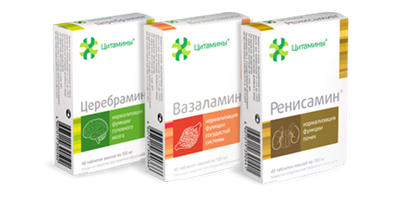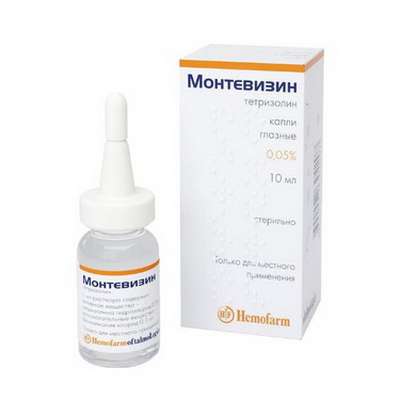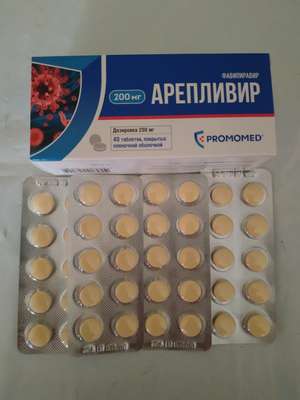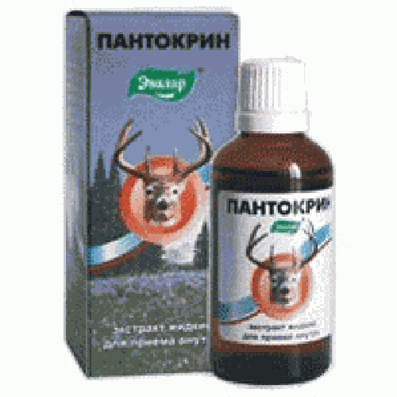Instruction for use: Dynastat
I want this, give me price
Active substance Parecoxib
À̉Ơ M01AH04 Parecoxib
Pharmacological group
NSAIDs – Coxiba
Nosological classification (ICD-10)
R52.0 Acute pain
Acute pain syndrome, Acute pain syndrome with osteoarthritis, Acute pain syndrome of traumatic origin, Severe pain of a neurogenic nature, Severe pain, Pain syndrome at delivery
R52.9 Unspecified Pain
Pain after cholecystectomy, Pain shooting, Non-malignant pain, Obstetric and gynecological pain, Pain syndrome, Pain in the postoperative period, Pain in the postoperative period after orthopedic surgery, Pain of inflammatory genesis, Pain than cancer genesis, Pain syndrome after diagnostic procedures, Pain after surgery Diagnostic, Pain after surgery, Pain after orthopedic surgery, Pain after injuries, Pain after the removal of hemorrhoids, Pain at the non-rheumatic inflammation of nature, Pain in inflammatory lesions of the peripheral nervous system, Pain in diabetic neuropathy, Pain in acute inflammatory diseases of the musculoskeletal system, Pain when the tendon pathology, Pain smooth muscle spasm, Pain spasm of smooth muscles (renal and biliary colic, intestinal spasms, dysmenorrhea), Pain spasm of smooth muscles of internal organs, Pain spasm of smooth muscles of internal organs (kidney and biliary colic, intestinal spasms, dysmenorrhea), Pain in trauma syndrome, Pain with injuries and after surgical interventions, Pain in chronic inflammatory diseases of the musculoskeletal system, Pain with duodenal ulcer, Pain syndrome in gastric ulcer, Pain syndrome in gastric ulcer and duodenal ulcer, pain, Pain during menstruation, pain syndromes, painful condition, Painful foot fatigue, Sore gums when wearing dentures, Soreness of the cranial nerves exit points, Painful menstrual irregularities, Painful dressings, Painful muscle spasm, Painful teeth growth, Melosalgia, Pain in the area of the surgical wound, Pain in the postoperative period, Pain in the body, Pain after diagnostic procedures, Pain after orthopedic surgery, Pain after surgery, The pains of the flu, Pain in diabetic polyneuropathy, Pain for burns, Pain during sexual intercourse, Pain during diagnostic procedures, Pain during therapeutic procedures, for colds Pain, Pain in sinusitis, Pain in trauma, Pain traumatic, The pain in the postoperative period, Pain after diagnostic procedures, The pain after sclerotherapy, Pain after surgery, postoperative Pain, Pain postoperative and posttraumatic, posttraumatic pain, Pain when swallowing, Pain in infectious and inflammatory diseases of the upper respiratory tract, The pain of burns, The pain in traumatic muscle injury, Pain in trauma, The pain of tooth extraction, The pain of traumatic origin, Pain caused by spasm of smooth muscles, Expressed pain syndrome, Expressed pain syndrome, traumatic origin, Postoperative pain, Post-traumatic pain, Post-traumatic pain syndrome, Torpid pain, Traumatic pain, Traumatic pain, Mild pain, Moderately severe pain, Moderate pain, Polyarthralgia with polymyositis
T88.9 Complication of surgical and medical care, unspecified
Pain in the postoperative period, Pain in the postoperative period after orthopedic surgery, Pain syndrome after diagnostic procedures, Pain after surgery Diagnostic, Pain after surgery, Pain after orthopedic surgery, Pain after the removal of hemorrhoids, Pain in the application of excimer laser, Pain with injuries and after surgical interventions, Pain syndromes in the dental practice, Painful diagnostic intervention, Painful diagnostic manipulations, Painful instrumental diagnostic procedures, Painful instrumental manipulation, Painful treatments, Painful manipulations, Painful dressings, Painful therapeutic interventions, Pain in the area of the surgical wound, Pain in the postoperative period, Pain after diagnostic procedures, Pain after orthopedic surgery, Pain during diagnostic procedures, Pain during therapeutic procedures, Pain in orthopedics, The pain in the postoperative period, Pain after diagnostic procedures, The pain after sclerotherapy, The pain after dental surgery, postoperative Pain, Pain postoperative and posttraumatic, The pain of tooth extraction, Inflammation after surgery or injury, Inflammation after orthopedic surgery, Inflammation after surgery, The inflammatory syndrome after surgery, Festering postoperative fistula, Operating wound, Complications after tooth extraction
Composition and form of release
Lyophilizate for solution for injection 20 mg, 1 fl.
parecoxib (in the form of the sodium salt) 20 mg/40 mg
1 ml of the prepared solution = 20 mg
auxiliary substances: sodium hydrogen phosphate heptahydrate; phosphoric acid and / or sodium hydroxide (to maintain the pH level)
solvent: sodium chloride solution 0,9% - 1 ml
in vials, complete with a solvent in ampoules; in a pack of cardboard 1, 3, 5 or 10 sets.
Description of dosage form
Porous mass or tablet white or almost white; The solvent applied is a clear, colorless solution.
pharmachologic effect
Pharmacological action - anti-inflammatory, analgesic.
Pharmacodynamics
NSAIDs. Selective inhibitor of COX-2. After the administration of the drug, the active ingredient parecoxib rapidly hydrolyses with the formation of valdecoxib.
The mechanism of action of valdecoxib is associated with inhibition of PG synthesis with the participation of COX-2. Valdecoxib acts as an selective inhibitor of COX-2 for both peripheral and central action of PG; while it does not inhibit COX-1 and has virtually no effect on the physiological processes in the tissues, especially in the mucous membrane of the stomach and intestine, that depend on COX-1, and it also has no effect on platelet aggregation and bleeding time. Due to the selective effect on COX-2 and the absence of influence on COX-1, the incidence of endoscopically confirmed ulcers and erosions of the stomach and duodenum is lower with Dynastat than with nonselective NSAIDs.
Pharmacokinetics
After intravenous or intravenous injection parekoksib as a result of enzymatic hydrolysis in the liver is rapidly metabolized to valdecoxib, which is a pharmacologically active component.
Suction. After intravenous administration of Dynastat in the dose range of 20, 50 and 80 mg / day, changes in such pharmacokinetic indices of valdecoxib as AUC and Cmax are linear. After a single IV or IM injection of sodium parecoxib in a dose of 20 mg of Cmax, valdecoxib is reached after approximately 30 minutes and 1 hour, respectively. Values of AUC and Cmax of valdecoxib are similar after IV and IM.
Distribution. CSS of valdecoxib in plasma when administered 2 times a day is reached within 4 days. The volume of distribution of valdecoxib after intravenous administration is approximately 55 liters.
Binding to plasma proteins is approximately 98% at concentrations that are reached when applying the maximum dose (80 mg / day).
Valdecoxib, but not parecoxib, mainly accumulates in erythrocytes.
Metabolism. Parecoxib rapidly and almost completely converted to valdecoxib and propionic acid, while T1 / 2 valdecoxib from the plasma is approximately 22 minutes. Intensively metabolized in the liver in many ways, including metabolism involving isoenzymes CYP3A4 and CYP2C9, and also by CYP-independent glucuronation (about 20%) of the sulfonamide component. In the plasma, a hydroxylated metabolite of valdecoxib is found, which exhibits activity as an inhibitor of COX-2. It accounts for approximately 10% of the valdecoxib concentration; due to the fact that the concentration of this metabolite is low, it can be considered that it has no significant clinical effect after the administration of therapeutic doses of parecoxib sodium.
Excretion. Valedecoxib is excreted by metabolic transformation in the liver, and only less than 5% of valdecoxib is unchanged in urine. Unchanged parecoxib in urine is not found, but in feces it is found only in trace amounts. Approximately 70% of the dose is excreted in the urine in the form of inactive metabolites. Plasma Cl for valdecoxib is about 6 l / h. After intravenous or / m administration of parecoxib sodium T1 / 2 valdecoxib - about 8 hours. The drug is not excreted in hemodialysis.
Pharmacokinetics in special clinical cases
It was noted that in elderly patients the clearance of valdecoxib is reduced, therefore the concentration of valdecoxib in plasma is approximately 40% higher than in young patients. CSS of valdecoxib in plasma is 16% higher in women than in older men.
In patients with impaired renal function of varying severity with the administration of 20 mg of Dynastat, IV parecoxib is rapidly excreted from the plasma. Since for valdecoxib, the kidneys do not play a significant role in excretion, and therefore the state of their function does not have a significant effect on the pharmacokinetics of the drug, there is no change in the valdecoxib clearance, even in patients with severe renal dysfunction, as well as in hemodialysis patients.
With lesions of the liver of moderate severity, there is no decrease in the rate and degree of conversion of parecoxib into valdecoxib. As in such patients the effect of valdecoxib is more than doubled (by 130%), a reduction in dosage is necessary.
Indication of the drug Dynastat
acute pain;
prevention or reduction of postoperative pain;
reduction in the need for opioid analgesics.
Contraindications
allergic reactions to sulfonamides;
allergic reactions (including bronchospasm, acute rhinitis, angioedema, urticaria) after taking acetylsalicylic acid or other NSAIDs, including other selective inhibitors of COX-2;
severe hepatic impairment;
erosive and ulcerative lesions of the gastrointestinal tract in the phase of exacerbation (including acute peptic ulcer);
chronic heart failure (NYHA class III-IV functional class);
III trimester of pregnancy;
lactation period;
children and adolescents under 18;
increased sensitivity to parecoxib, as well as to any of the components that make up the drug.
Carefully:
aorto-coronary bypass, in case of fluid retention in the body (including in conditions that arise or worsen because of it, including chronic heart failure and hypertension);
dehydration;
erosive and ulcerative lesions of the gastrointestinal tract in anamnesis;
inflammatory bowel disease;
carrying out operations on the organs of the digestive tract, urological operations;
moderately expressed hepatic impairment;
severe renal failure.
Application in pregnancy and lactation
There is no experience of using Dynastat in pregnancy.
Dynastat should be used during pregnancy only if the intended benefit to the mother exceeds the potential risk to the fetus.
The use of Dynastat is contraindicated in the third trimester of pregnancy, because due to inhibition of GH synthesis, it can cause a decrease in contractile activity of the uterus, as well as a premature closure of the Botallov duct.
It is not known whether parecoxib is excreted in breast milk, therefore, taking into account the potential risk of side effects from parecoxib in a breastfed infant and considering the importance of the drug for the mother, it is worth assessing whether to continue breastfeeding or to begin therapy with Dynastat by interrupting feeding for the duration of treatment.
Side effects
From the cardiovascular system: often (≥1% and <10%) - a decrease or increase in blood pressure; sometimes (≥0.1% and <1%) - bradycardia, cerebrovascular disorders; rarely (<0.1%) is chronic heart failure.
From the side of the central nervous system and peripheral nervous system: often - dizziness, anxiety, insomnia, hypoesthesia.
From the senses: sometimes - pain in the ears.
From the digestive system: often - postextraction lunechke alveolitis, constipation, flatulence, indigestion; sometimes - dry mouth, ulcers and erosion of the stomach and duodenum, increased activity of ALT and ACT; rarely - hepatitis.
From the side of metabolism: often - increase in the level of creatinine, hypokalemia; sometimes - hyperglycemia, an increase in the level of urea nitrogen in the blood.
From the respiratory system: often - respiratory failure; sometimes pharyngitis.
Dermatological reactions: often - increased sweating, itching; sometimes - a rash, postoperative complications in the wound site (slowing healing of the wound);
From the musculoskeletal system: sometimes - arthralgia.
From the hemopoietic system: sometimes - thrombocytopenia.
From the urinary system: sometimes - oliguria; rarely acute renal failure.
Allergic reactions: rarely - anaphylactic shock, bronchospasm; on the background of the use of valdecoxib, angioedema, anaphylactic reactions, erythema multiforme, exfoliative dermatitis, Stevens-Johnson syndrome and toxic epidermal necrolysis were noted (these reactions are also not excluded even when taking parecoxib).
Other: often - back pain, peripheral edema, postoperative anemia, ecchymosis; sometimes - asthenia.
Local reactions: sometimes - pain at the injection site, pathological separable from the drainage, installed after surgery, accompanied by dissection of the sternum, wound infection (including in aorto-coronary bypass surgery).
These rare serious side effects were noted against the background of NSAID administration and also can not be completely excluded for Dynastat.
Interaction
Dynastat with simultaneous application can reduce the antihypertensive effect of ACE inhibitors.
The combined use of the drug Dynastat with warfarin causes a slight increase in warfarin AUC, as well as PV.
With simultaneous use of Dynastat with fluconazole (inhibitor CYP2C9), the AUC value of parecoxib in plasma is increased by 62%, with ketoconazole (inhibitor CYP3A4) - by 38%.
Valdecoxib (an active metabolite of parecoxib) causes a significant decrease in serum (25%) and renal (30%) lithium clearance, and as a result - a 34% increase in serum AUC of lithium.
Metabolism of valdecoxib can increase with its simultaneous administration with inducers of microsomal liver enzymes (including rifampicin, phenytoin, carbamazepine, or dexamethasone).
With the simultaneous use of Dynastat, the concentration of dextromethorphan (substrate CYP2D6) in plasma increases threefold. Caution should be exercised in the simultaneous appointment of Dynastat and drugs, the metabolism of which is carried out mainly with the participation of the isoenzyme CYP2D6, and which are characterized by a narrow therapeutic index (flecainide, propafenone, metoprolol).
There are no clinically significant pharmacokinetic interactions between parecoxib and intravenous or intravenous midazolam, heparin, propofol, fentanyl, or alfentanil.
There were no clinically significant interactions between valdecoxib and glibenclamide (glyburide), methotrexate, oral contraceptives (ethinyl estradiol / norethindrone).
There is no evidence of the interaction of parecoxib and inhalational anesthetics, such as nitrous oxide and isoflurane.
Parecoxib does not affect the antithrombotic effect of acetylsalicylic acid.
Simultaneous administration with naloxone has no effect on the severity of the analgesic effect of valdecoxib, therefore it is assumed that simultaneous administration with opioid analgesics does not cause an increase in sedation and additional inhibition of the respiratory center.
NSAIDs may reduce the effectiveness of furosemide and thiazides by reducing renal GHG synthesis.
With the simultaneous use of NSAIDs and cyclosporine or tacrolimus, the nephrotoxic effect of the latter is enhanced.
Dosing and Administration
In / in (intravenously), in / m (intramuscularly). Dynastat may be given either IV or IM once, and in the form of regular repeated injections or as needed. After the start of therapy, the dose should be adjusted depending on the patient's response. There is an experience of using the drug for 7 days.
In acute pain, the recommended one-time initial dose is 40 mg for IV or IM. Then, if necessary, you can continue to administer every 6-12 hours for 20-40 mg; while the daily dose should not exceed 80 mg.
In / in the bolus injection can be made directly into the vein or into the tube of a pre-established system for intravenous infusions. In / m administration should be done slowly and deeply into the muscle.
To prevent or reduce postoperative pain, the drug is administered at a dose of 40 mg IV or IM (preferably IV) 45-30 minutes before surgery. To maintain analgesia, it may be necessary to repeat the postoperative administration of the drug according to the scheme described for the treatment of acute pain.
To reduce the need for opioid analgesics, Dynastat can be used in combination with opioid analgesics according to the scheme described for the treatment of acute pain. The daily need for opioids is reduced by 20-40% in case of their simultaneous appointment. The optimal effect is achieved when the Dynastat is administered before the introduction of opioids.
Older patients are not required to adjust the dose. However, in elderly patients with a body weight of less than 50 kg, treatment should begin with the introduction of half the recommended dose; while the maximum daily dose should not exceed 40 mg.
Patients with a slight violation of liver function dose adjustments are usually not required. Patients with impaired liver function of moderate severity should be administered with caution, administration should begin at half the recommended dose, and the maximum daily dose should be reduced to 40 mg. Experience with the use of Dynastat in patients with severe liver damage is absent; because the appointment of the drug to such patients is not recommended.
For renal insufficiency of severe degree (Cl creatinine <30 ml / min) or conditions predisposing to fluid retention in the body, parecoxib should be administered at the lowest recommended dose and carefully monitor renal function.
Rules for the preparation of solution for injection
To prepare the solution, 1 ml (for bottles of 20 mg) or 2 ml (for 40 mg bottles) 0.9% solution of sodium chloride for injection is used.
The following solvents can also be used: 5% dextrose (glucose) solution for injection, 5% dextrose solution with 0.45% sodium chloride for injection (the solution prepared using these solvents is isotonic).
The use of Ringer's lactate (Hartman) injectable solutions or Ringer's lactate for injections with 5% dextrose for the preparation of the Dynastat solution is not recommended, this leads to precipitation.
The use of sterile water for injections as a solvent is also not recommended, as the resulting solution will not be isotonic.
The prepared solution can not be cooled or frozen.
After dissolution, Dynastat can be injected into an IV infusion system containing the following solvents: sodium chloride solution for injection (0.9%), dextrose injection solution (5%), Ringer's lactate injection solution, 5% dextrose solution with 0 , 45% sodium chloride.
Administration of the Dynastat solution to IV infusion systems containing a 5% dextrose solution in Ringer's lactate or others not listed above is not recommended, as this can cause precipitation.
Dynastat should not be mixed with other drugs.
Overdose
Single doses up to 200 mg of parecoxib were administered to / in healthy volunteers without the occurrence of clinically significant side effects. Parecoxib in a dose of 50 mg was administered iv twice a day (100 mg / day) for 7 days, with no signs of toxicity.
Data on the clinical symptoms of overdose are absent.
In case of suspicion of an overdose of Dynastat, symptomatic treatment is indicated. Dialysis is unlikely to be effective for removing the drug, since parecoxib is characterized by a high degree of binding to plasma proteins.
special instructions
When treating the drug Dynastat, there were cases of ulceration (including perforation) and bleeding from the upper gastrointestinal tract. In this regard, care should be taken when prescribing the drug to patients with peptic ulcer of the stomach and duodenum, history of bleeding from the gastrointestinal tract and inflammatory diseases of the gastrointestinal tract in active form and in the anamnesis, as well as elderly patients, patients with cardiovascular diseases and patients taking acetylsalicylic acid.
In the case of the appearance of the first signs of skin rash or other signs of hypersensitivity, Dynastat should be discarded.
Against the backdrop of the use of valdecoxib, the development of hypersensitivity reactions (anaphylactoid reactions and angioedema) in patients taking valdecoxib, they are also not excluded for parecoxib. These reactions were noted in patients with already known and still no allergic reactions to sulfonamides.
After the appointment of parecoxib, anticoagulant activity should be especially carefully monitored for the first few days in patients taking warfarin or similar preparations, since such patients may be at greater risk of bleeding.
Because of the inhibition of GHG synthesis, a number of patients taking parecoxib may experience fluid retention and swelling, so caution should be exercised in appointing Dynastat to patients with conditions that develop or worsen due to fluid retention. Patients with a history of heart failure or hypertension should be closely monitored.
Care should be taken when prescribing Dynastat to patients with severe dehydration. In such cases, it is advisable to first rehydrate, and then begin therapy.
There is no experience of using the drug in patients with severe impairment of liver function. The use of Dynastat is not recommended. The drug should be used with caution in the treatment of patients with violations of the liver function of medium severity and appoint the lowest recommended dose.
The condition of patients with symptoms and / or signs of a liver function disorder or those who have been tested for liver function abnormality should be carefully monitored during treatment with Dynastat.
Because of the anti-inflammatory effect, Dynastat may reduce the significance of diagnostic signs (eg, fever)in determining the infection.
Dynastat should be used with caution after aorto-coronary bypass surgery, as this category of patients has a higher risk of developing serious adverse reactions, especially in patients with a history of cerebrovascular disease, as well as those whose body mass index> 30 kg / m2.
For patients receiving fluconazole therapy, Dynastat should be given at the lowest recommended dose. When co-administered with ketoconazole, no dose adjustment is required.
Serious monitoring of lithium concentration in serum should be carefully monitored after initiating therapy with Dynastat or after changing the dosage regimen in patients receiving lithium therapy.
Because of insufficient influence on the function of platelets, parecoxib can not be considered as a substitute for acetylsalicylic acid, which is prescribed for the prevention of cardiovascular diseases.
Use in Pediatrics
No experience of using the drug in patients under the age of 18 years.
Influence on the ability to manage motor vehicles and work with mechanisms
During the period of treatment, dizziness, drowsiness and anxiety may occur, therefore, it is necessary to refrain from engaging in potentially dangerous activities that require an increased concentration of attention and speed of psychomotor reactions.
storage Conditions
At a temperature not exceeding 30 ° C.
Keep out of the reach of children.
Shelf life
3 years.
Do not use after the expiry date printed on the package.

 Cart
Cart





